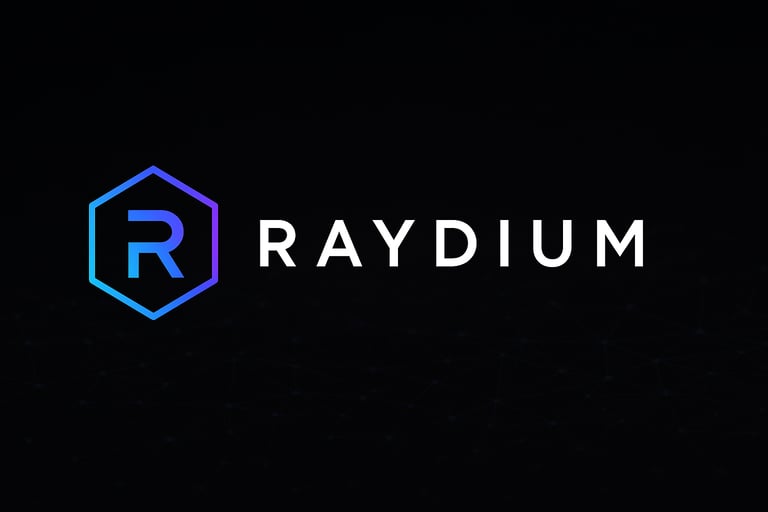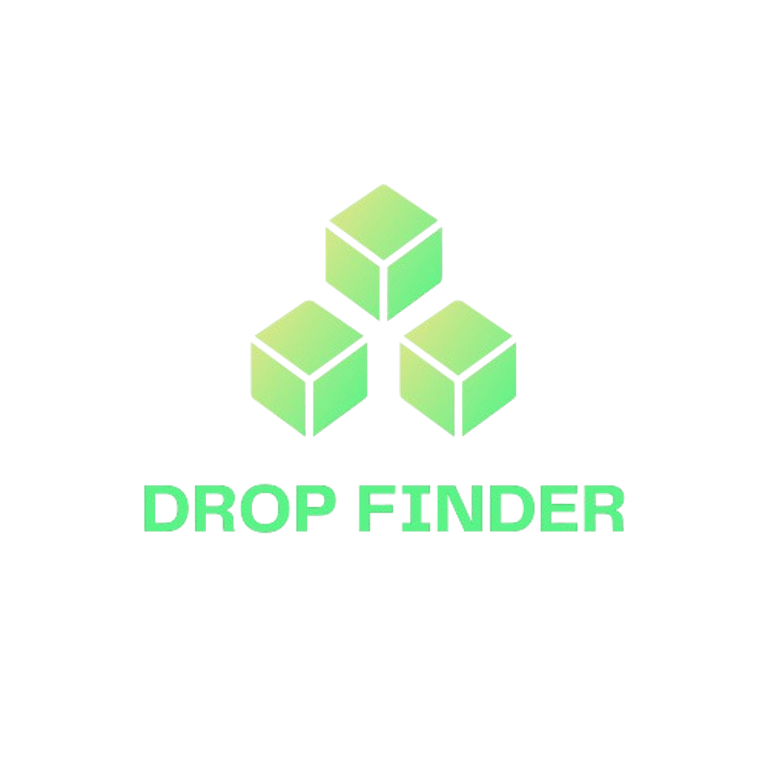How Raydium Became the Biggest DEX on Solana: The Hidden Force Behind the DeFi Revolution
Discover how Raydium transformed from a small DeFi experiment into the largest decentralized exchange (DEX) on the Solana blockchain. This story explores its evolution, innovation, and dominance in the world of high-speed crypto trading — with a DropFinder-backed analysis of why Raydium is Solana’s true powerhouse in 2026.
CRYPTO NEWS
10/13/20255 min read
Introduction: The Rise of Raydium and the Solana Boom
In the early days of Solana, decentralized exchanges were fighting for space in a blockchain world dominated by Ethereum giants like Uniswap and SushiSwap. Solana promised speed, scalability, and ultra-low fees — but it needed a DEX that could truly harness its power.
Enter Raydium, a protocol that changed the DeFi landscape forever. Built with lightning-fast trading, deep liquidity, and a unique hybrid model connecting centralized order books with decentralized pools, Raydium didn’t just join the Solana ecosystem — it defined it.
By 2026, Raydium stands tall as the biggest DEX on Solana, with billions in trading volume, hundreds of integrated projects, and a community-driven future that continues to grow.
Let’s dive into the story of how this project evolved, the challenges it faced, and why it became the backbone of Solana’s DeFi revolution.
Chapter 1: The Early Days — Solana’s DeFi Awakening
The crypto world in 2020–2021 was witnessing the DeFi summer — an explosion of decentralized protocols redefining how people traded, borrowed, and earned yield. However, Ethereum’s gas fees and congestion issues created frustration for small investors.
Solana came as a breath of fresh air — capable of handling 65,000 transactions per second with almost zero transaction fees. But it needed a DEX that could match its speed.
That’s when a group of visionary developers decided to build Raydium — a decentralized exchange designed to combine the best of automated market makers (AMMs) and centralized order books.
The vision was simple yet bold:
“Create a DeFi platform that feels as fast as Binance but remains as decentralized as Uniswap.”
It was this blend of performance and transparency that set the stage for Raydium’s dominance.
Chapter 2: The Technology Behind the Power
Raydium’s architecture is what truly separates it from the pack. Unlike traditional AMMs that rely solely on liquidity pools, Raydium integrated directly with Serum’s central limit order book (CLOB).
This unique integration gave users several key advantages:
Deeper liquidity: Trades on Raydium could tap into Serum’s entire order book.
Better price execution: Users often got more favorable rates compared to traditional AMMs.
Faster transactions: Powered by Solana, Raydium trades settled almost instantly.
By 2022, this technical advantage allowed Raydium to grow explosively. It became the go-to DEX not just for retail traders, but also for new Solana-based projects launching their tokens.
From meme coins to DeFi protocols, everyone wanted to list on Raydium.
Chapter 3: Community and Tokenomics — The $RAY Revolution
A major reason behind Raydium’s success was its community-first approach. The introduction of its governance token, $RAY, allowed users to become part of the ecosystem’s future.
Holders could:
Stake $RAY for passive income.
Vote on proposals for upgrades or new features.
Participate in early project launches through AcceleRaytor, Raydium’s unique launchpad.
This feature became a game changer.
AcceleRaytor allowed early investors to participate in fair token launches, ensuring transparency and equal opportunity — something that was missing in most DeFi ecosystems at the time.
The excitement around $RAY and AcceleRaytor made Raydium a launch destination for upcoming Solana tokens — from gaming projects to AI-based dApps.
Chapter 4: The Turning Point — When Others Fell Behind
In the DeFi world, many DEXs rise quickly and fade away just as fast. Raydium, however, managed to maintain its edge.
While competitors like Orca, Saber, and Mango Markets offered unique utilities, Raydium’s consistent innovation and tight Serum integration kept it ahead.
One of its biggest wins came in 2023, when the Solana network suffered temporary slowdowns. Many projects struggled — but Raydium’s robust backend optimization allowed it to maintain functionality when others failed.
This reliability built immense trust among traders and developers alike.
By 2024, Raydium was processing tens of millions of dollars in daily volume, far outpacing every other Solana DEX combined.
Chapter 5: The Rise of Solana Meme Coins
As the meme coin trend exploded across blockchains, Solana emerged as a top choice thanks to its low fees and lightning speed. Raydium became the epicenter of this movement.
Every new Solana meme coin — from Bonk to Wen — found its first liquidity pool on Raydium. The DEX became the launchpad of viral tokens, attracting both serious investors and casual traders chasing the next 100x opportunity.
This culture of fair launches made Raydium the people’s exchange. Anyone could deploy a token, provide liquidity, and instantly reach thousands of traders.
It wasn’t just a trading hub — it became Solana’s meme culture engine.
Chapter 6: Security, Transparency, and Trust
In crypto, success can’t last without security. Raydium’s team understood this and implemented rigorous smart contract audits, multi-signature controls, and real-time monitoring systems.
The platform never suffered a major hack or exploit, which in DeFi is a rare achievement.
Its open-source nature and constant community engagement on platforms like Discord and X (formerly Twitter) built transparency. People trusted Raydium because they could see what was happening under the hood.
In 2025, when Solana’s total value locked (TVL) surpassed $10 billion, Raydium alone accounted for nearly 30% of all liquidity — a staggering figure that highlighted its dominance.
Chapter 7: The Ecosystem Expansion
Raydium didn’t stop at being just a DEX. It evolved into a complete DeFi ecosystem.
Some of its key expansions include:
Yield Farming: Users could earn rewards by providing liquidity, supporting ecosystem tokens while earning yields.
Fusion Pools: These multi-token pools allowed projects to attract deeper liquidity.
AcceleRaytor: Raydium’s in-house launchpad that became the starting point for many successful Solana tokens.
Cross-chain Compatibility: Future updates aimed at bridging assets from Ethereum, Polygon, and other chains.
By becoming a hub of DeFi innovation, Raydium attracted partnerships with major Solana protocols and even NFT marketplaces that needed reliable liquidity infrastructure.
Chapter 8: The Role of Innovation and User Experience
Unlike many DEXs that catered only to advanced traders, Raydium focused heavily on user experience.
Its UI was sleek, beginner-friendly, and fast. The ability to track live charts, manage liquidity, and analyze token data all from one dashboard made it the favorite among new crypto users.
Raydium also supported integrations with trading bots and analytics tools, making it ideal for both retail and professional users.
Every update made the platform feel more like a next-gen hybrid exchange — the best of centralized and decentralized worlds.
Chapter 9: Challenges and Lessons Learned
Raydium’s journey wasn’t without challenges. The Solana network outages in 2022–2023, regulatory uncertainty, and competition from other ecosystems tested its resilience.
However, instead of slowing down, Raydium improved its backend systems, expanded its development team, and embraced transparency with users.
This adaptability is what allowed it to thrive where others collapsed.
It proved one thing — in crypto, innovation and trust are the only two currencies that truly matter.
Chapter 10: The Future — Raydium’s Vision Beyond 2026
Looking ahead, Raydium is not just a DEX — it’s positioning itself as a multi-chain liquidity hub.
Its roadmap includes:
AI-powered trading tools for smarter liquidity management.
NFT integrations allowing swaps between tokens and digital collectibles.
Cross-chain DeFi, connecting Solana with Ethereum, TON, and other ecosystems.
With Solana’s growth and institutional interest rising, Raydium’s scalability gives it an unmatched advantage.
Analysts at DropFinder predict that Raydium will continue to lead as Solana’s liquidity core, driving over 40% of the ecosystem’s DeFi volume by 2027 — if it maintains its innovation pace and community focus.
Conclusion: The DeFi Titan of Solana
From humble beginnings to becoming the biggest DEX on Solana, Raydium’s story is one of innovation, resilience, and community strength.
It didn’t just provide liquidity — it provided opportunity.
It didn’t just facilitate trades — it built trust.
As DeFi continues to evolve, Raydium remains at the center of Solana’s beating heart, setting new standards for decentralized finance.
For every new trader or developer stepping into Solana’s world, Raydium is not just a platform — it’s the gateway to decentralized freedom.
DropFinder Reference:
According to recent reports and analytics from DropFinder, Raydium continues to dominate Solana’s DeFi landscape, leading in trading volume, liquidity depth, and user adoption. Its hybrid design, scalability, and security-first approach make it the most successful DEX on Solana, paving the way for a new generation of decentralized innovation.




